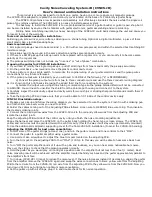
Concepts and Features
R&S
®
ZNC
36
User Manual 1173.9557.02 ─ 13
3.2.4.1
Cartesian Diagrams
Cartesian diagrams are rectangular diagrams used to display a scalar quantity as a func-
tion of the stimulus variable (frequency / power / time).
●
The stimulus variable appears on the horizontal axis (x-axis), scaled linearly (sweep
types "Lin Frequency", "Power", "Time", "CW Mode") or logarithmically (sweep type
"Log Frequency").
●
The measured data (response values) appears on the vertical axis (y-axis). The scale
of the y-axis is linear with equidistant grid lines although the y-axis values may be
obtained from the measured data by non-linear conversions.
The following examples show the same trace in Cartesian diagrams with linear and log-
arithmic x-axis scaling.
3.2.4.2
Conversion of Complex into Real Quantities
The results in the "TRACE > MEAS" menu can be divided into two groups:
●
"S-Parameters", "Ratios", "Wave Quantities", "Impedances", "Admittances", "Z-
Parameters", "Y-Parameters", and "Imbalances" are complex.
●
"Stability" factors, "Power Sensor" results, and "DC" results are real.
The following table shows how the response values in the different Cartesian diagrams
are calculated from the complex measurement values z = x + j y (where x, y, z are func-
tions of the sweep variable). The formulas also hold for real results, which are treated as
complex values with zero imaginary part (y = 0).
Screen Elements
















































